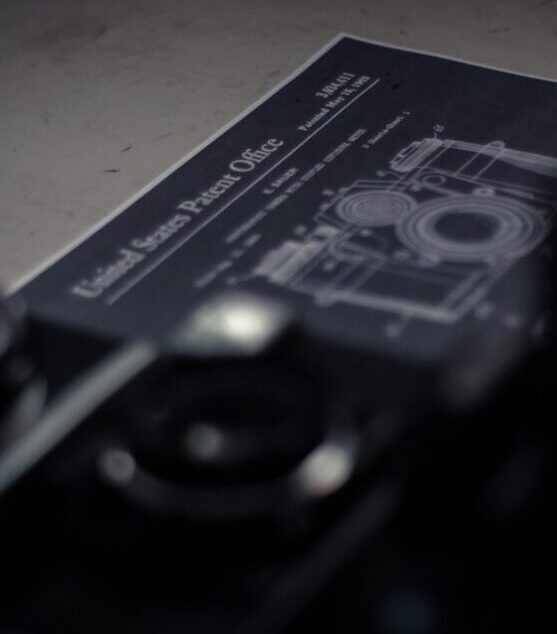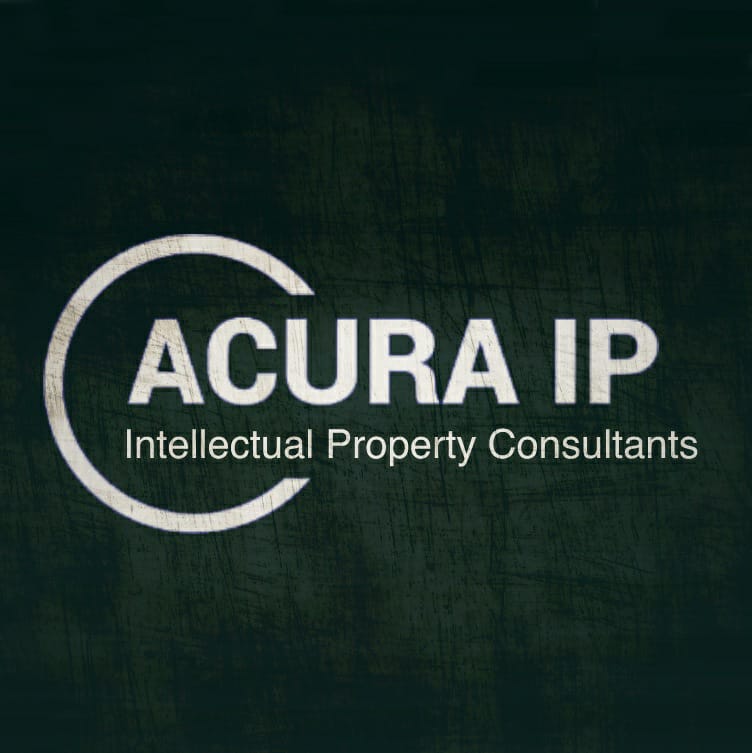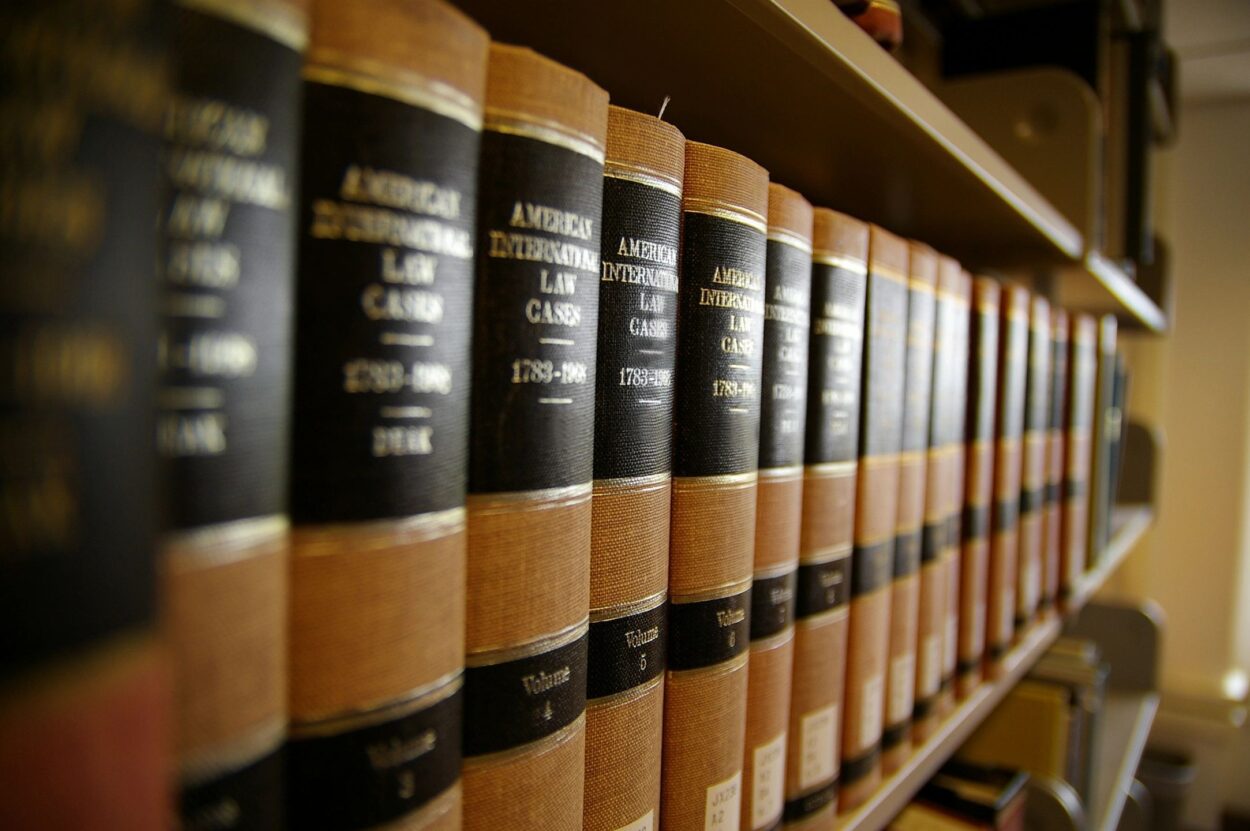
What Kind of Inventions Can Be Patented?
As an inventor working on an idea or invention, the first thought which is often encountered includes “Is my idea patentable”, “Can my invention be patented”, “what kind of inventions can be patented” and “Is my idea patent-eligible”. The foremost thing which you need to be aware of is that a mere idea or a concept cannot be patented. Your idea or invention should be a:
- new product; or
- new process;
that solves a technical problem.
You must also be aware that merely a new process or a product in itself will not qualify for an invention, additionally, the invention or idea must also:
- involve an inventive step (i.e., must not be obvious to a person skilled in the art); and
- capable of industrial applications;
Again, you may find the above terms such as ‘new product’, ‘new process’, and ‘inventive step’ may not be self-explanatory and still do not clarify if your idea qualifies for a patent. Therefore, please continue to read below to understand what can be patented? and if your idea or invention is a product or process and if it satisfies the requirement of patentability.
Inventions – Can it be Patented?
Generally, inventions are targeted toward addressing a technical problem by providing a technical solution. As you are already aware, inventions can be categorized broadly into products and processes, let’s look at a few examples under both the categories which would help you understand under which category your invention may fall.
| New Product | Machines, apparatus, articles of manufacture, tools, compositions, chemical substances, etc. |
| New Process | Method for production, a method for using the machines or a process of synthesis. |
***In certain circumstances, your invention may comprise both a product as well as a process, and in such cases, claims can be drafted to cover both the categories of the invention i.e., product and process.
To summarize, the inventions need to have a tangible application to solve a technical problem irrespective of whether it is the product or the process.
Criteria for Patentability of Inventions
At this stage, if you think your idea or concept qualifies to be defined as an invention, you have to check if your invention meets the basic criteria to meet the requirements of patentability below:
- Novelty;
- Non-Obviousness (i.e., inventive step); and
- Industrial Applicability;
What is the Novelty of an Invention?
As an inventor, very often you would be describing your idea or invention as something which is first in the world and that has not been thought of, discussed, or published in the public domain or implemented by anyone else for solving a specific technical problem that your invention is addressing.
If the above assertion is true, then the novelty of the invention is satisfied i.e., an invention is novel if the same is not new as compared to the existing prior art.
Non-Obviousness of Invention (i.e., inventive step)
While the criterion of novelty is somewhat straightforward, the criteria of non-obviousness or the inventive step are not always readily determined, as the threshold for non-obvious involves that the invention is not obvious to a person skilled in the relevant art to which the invention belongs to.
For instance, if your invention is related to an improved mechanical device and if such improvement only involves the re-arrangement of certain parts which results in certain benefits, then such re-arrangement would be very obvious to a person skilled in the art, for instance, the assembly line or a manufacturer manufacturing such mechanical devices.
Capable of Industrial Applicability of Invention
The third requirement for an invention to be patentable includes that the invention is capable of industrial applications i.e., your invention must be capable of being used or made in the industry and the meaning of industry is taken in its broadest sense. Generally, there is no need to specifically explain how your invention will be used in the industry since most of the time the industrial applicability of the invention will be self-evident.
You may also refer to an article authored by our consulting counsel Adv. Gopikrishan Mukundan on “Patent Law 101: The Basics” and also an article authored by our consulting counsel Adv. Sutapa Jana on “What is a Patent”.
If you believe your invention would meet these three requirements elaborated above, then your invention may be considered patent-eligible. However, you should be aware that even though your invention may satisfy the requirements of novelty, inventive step, and industrial applicability, you still must verify if your invention will fall under any non-patentable inventions.
Non-Patentable Inventions
Almost all countries have a category of inventions that is not patentable even if it satisfies the requirements of patentability. While these categories of non-patentable inventions may overlap or vary mainly based on the laws of those specific countries, let’s look at the details of inventions that are non-patentable as per the Indian Patent law.
Section 3 of the Indian Patents Act, 1970
Section 3 of the Indian Patents Act, 1970 covers non-patentable inventions by defining “what are not inventions”. The portion of this section briefly lists out the inventions which are not inventions and the second portion of this section elaborations further in detail with examples for better understanding.
What are not Inventions?
| Section 3 | What are not inventions? |
| (a) | Frivolous inventions or anything contrary to well-established natural laws. |
| (b) | The intended use of the invention is contrary to public order or morality or causes serious prejudice to human, animal, plant life or health, or the environment. |
| (c) | Discoveries of scientific principles, theories, and living or non-living substances in nature. |
| (d) | Mere discovery of a new form of a known substance or mere discovery of any new property or new use for a known substance or mere use of a known process, machine, or apparatus. |
| (e) | Substances that are obtained by a mere admixture with only aggregations of the properties of individual components or processes for preparing such substances. |
| (f) | Mere arrangement or re-arrangement or duplication of known devices. |
| (h) | Method of agriculture or horticulture. |
| (i) | Any process involving medicinal, curative, prophylactic diagnostic, therapeutic, or other treatment of human beings or any process for similar treatment of animals to render them free of diseases or to increase their economic value or that of their products. |
| (j) | Plants and animals in whole or any part thereof. |
| (k) | Mathematical or business method or a computer program per se or algorithms. |
| (l) | Literary, dramatic, musical, or artistic work or any other aesthetic creation whatsoever including cinematographic works and television productions. |
| (m) | Mere scheme or rule or method of performing mental act or method of playing a game. |
| (n) | Presentation of Information. |
| (o) | Topography of integrated circuits. |
| (p) | Traditional knowledge or aggregation or duplication of known properties of a traditionally known component or components. |
From the above, you may be able to make a quick confirmation if your invention falls under any of the listed non-patentable inventions. Unfortunately, if you think your invention might be falling under any of the listed exclusions, you should explore in detail the available options strategically to bring your invention under patentable subject matter.
For instance, you may contact any patent attorney or a patent agent to discuss various strategies to draft your application in a such way that you might be able to overcome the hurdle posed by the above-mentioned exclusions. Alternatively, for a deeper understanding of these exclusions before you contact the patent attorney or the patent agent, you refer to our second portion discussing in detail each of the exclusions.
Section 3(a) of the Patents Act, 1970
The above sub-section excludes inventions that are frivolous or claims anything contrary to well-established natural laws.
Examples:
- machine claiming to produce perpetual motion;
- apparatus claiming to provide output without input;
- any device claiming to achieve 100% efficiency;
Section 3(b) of the Patents Act, 1970
This sub-section specifically excludes inventions with a primary or intended use or commercial exploitation which would be contrary to public order or morality or causes prejudice to human, animal, plant life or health, or the environment.
Examples:
- any machine for committing any crime;
- any machine for committing cyber-crime;
- gambling;
- food contaminants;
- cloning of human beings;
- any device for trespassing;
Sometimes, depending upon the exact nature of the invention, a patent may be obtained if you can prove that the result of implementing the invention shall not be contrary to public order or morality or causes prejudice to human, animal, or plant life or health or the environment. For instance, subject matter such as pesticides, insecticides, self-defense devices, etc.
Section 3(c) of the Patents Act, 1970
It can be well-understood that a person cannot claim a patent for a mere discovery of any scientific principle or an abstract theory or discovery of any living or non-living substance occurring in nature.
However, you can note that any process or method which employs such scientific principle or theory results in any product or article can be patented provided it satisfies the other requirements of patentability.
Section 3(d) of the Patents Act, 1970
The section 3(d) excludes inventions which are:
- mere discovery of a new form of a known substance that does not result in the enhancement of the known efficacy of that substance;
- mere discovery of any new property of a known substance;
- mere discovery of new use for a known substance;
- mere discovery of the use of a known process, machine, or apparatus unless such known process results in a new product or employs at least one new reactant;
This sub-section finds more relevance for inventions from the pharmaceutical background since this sub-section aims to prevent ever-green patents as the same would be detrimental to public access to life-saving drugs.
For example, you cannot obtain patents for variants of compounds without showing the significant therapeutic efficacy of the new variant of compound over the existing one.
Section 3(e) of the Patents Act, 1970
This sub-section is more relevant to inventions relating to compositions wherein it excludes substances obtained by a mere admixture resulting only in the aggregation of the properties of the components thereof or a process for producing such substances.
You can overcome the applicability of this exclusion to your composition invention as long as you can show synergistic properties i.e., each of the ingredients combines to exhibit a superior property that is absent if the same ingredients are used separately or they show a combined activity beyond the sum of their individual effects. Some examples include detergents, lubricants, herbal formulations, etc.
Section 3(f) of the Patents Act, 1970
This subsection finds its relevance to mechanical inventions wherein section 3(f) of the Patents Act, 1970 aims to exclude mere arrangement or re-arrangement or duplication of known devices each functioning independently of one another in a known way.
Your invention may overcome this exclusion if the same shows that it is more than an obvious or workshop improvement and that it must also satisfy the requirement of an inventive step. Overall, to come this exclusion, the invention comprising any improvement or the combination must produce a new result, or a new article, or a better or cost-effective article than the prior art.
Section 3(h) of the Patents Act, 1970
Section 3(h) of the Patents Act, 1970 prohibits inventions relating to a method of agriculture or horticulture.
Examples:
- a method for cultivating a plant;
- a process for soil preparation for cultivation;
- a method for cultivation of paddy, wheat, mushrooms, etc.
This exclusion under Section 3(h) is straightforward forward that it is understood that you cannot patent any method of agriculture or horticulture. However, inventions relating to any agricultural machinery, fertilizers, pesticides, insecticides, etc., can be patented.
Section 3(i) of the Patents Act, 1970
As mentioned above, the section 3(i) of the Patents Act, 1970 excludes any process for medicinal, surgical curative, prophylactic, diagnostic, therapeutic, or other treatment of human beings or any process for a similar treatment of animals to render them free of disease or to increase their economic value or that of their products.
Examples:
- method of treating any disease;
- surgical procedures;
- application of medicines;
- diagnostic methods;
- treatment of animals for both diseases as well as increase their economic value i.e., treating animals for increased weight in the poultry industry;
However, please note that if your invention for any instrument or apparatus for any surgical, therapeutic, or diagnosis, then the same can be patented.
Section 3(j) of the Patents Act, 1970
The sub-section 3(j) of the Patents Act, 1970 clearly states that the following subject matter is excluded from the purview of patentability.
They include:
- plants in whole or part;
- animals in whole or part;
- seeds;
- varieties and species of plants and animals;
- biological processes for production or propagation of plants and animals;
If your invention relates to a genetically modified micro-organism then the same can be patented however if the microorganism is discovered from nature, then the same cannot be patented.
Section 3(k) of the Patents Act, 1970
Section 3(k) of the Patents Act, 1970 explicitly prohibits mathematical methods, algorithms, computer programs per se, and business methods as the same is not considered as a patentable subject matter.
Examples:
- Mathematical formulas;
- Business methods comprising activities relating to the transaction of goods and services;
- Algorithms in all forms;
- Computer programmes per se;
However, if your invention employing a computer program exhibits technical effect then the invention may be considered for patent provided it satisfies the other criteria of patentability.
Section 3(l) of the Patents Act, 1970
In cases of inventions relating to literary, dramatic, musical, or artistic work or any other aesthetic creation including cinematography and television productions are not patentable.
Examples include drawings, writings, translations, music, video, photographs, computer programs, artistic works, etc. If your invention or idea falls under any of this subject matter, you should apply to protect the same under the Copyright Act, 1957.
Section 3(m) of the Patents Act, 1970
This sub-section 3(m) of the Patents Act, 1970 excludes mere schemes or rules, or methods of performing any mental act or playing games.
Examples include methods of playing card games, board games, methods of imparting lessons, etc.
Section 3(n) of the Patents Act, 1970
Section 3(n) of the Patents Act, 1970, states that the presentation of information is not an invention. As the wordings of the same suggest, you cannot obtain a patent for merely presenting certain information in any form.
Examples;
- dictionaries;
- catalogs;
- time tables;
- calendars;
- telephone directories;
These are a few examples of the subject matter which cannot be patented irrespective of the form of expression of the same.
Section 3(o) of the Patents Act, 1970
If your invention is related to the topography of integrated circuits then the same cannot be patented since the protection of the same should be applied under the procedures set forth under the Semiconductor Integrated Circuit Layout Designs Act, 2000.
Section 3(p) of the Patents Act, 1970
Section 3(p) of the Patents Act, 1970 states that any invention which in effect is a traditional knowledge then such inventions cannot be patented. Traditional knowledge, by virtue of its existence in written form in various scriptures or practice for thousands of years, cannot be patented.
For example, if your invention is related to the preparation of a substance from turmeric or neem due to its medicinal properties then you cannot obtain a patent for the same since the medicinal properties of turmeric or neem is traditional knowledge. However, if your invention is related to extracting any specific compound from the turmeric or neem plant, then a patent can be obtained if it satisfies the conditions relating to other patentability criteria.
Conclusion
After pursuing the detailed article above, you may be able to understand what inventions are, what are the criteria for patenting an invention, and if your invention is falling under any non-patentable subject matter. If you still have any doubts or clarifications in understanding what can be patented? or if your invention meets any of these criteria, you can always write us or contact us here at [email protected].


Form 27 – Understanding Form 27 for Patentees and Licensees in the Post-2024 Amendment
Patents grant inventors exclusive rights over their creations for a…

Interpretation of Section 3(i) of the Indian Patent Act, 1970 in the Context of Non-Invasive Prenatal Testing
Introduction The advent of Non-Invasive Prenatal Testing (NIPT) has revolutionized…

Patent Publications vs Scientific Journal Publications: Understanding the Key Differences
Patent publications and scientific journal publications are two…
Categories
Recent Discussions
Form 27 – Understanding Form 27 for Patentees and Licensees in the Post-2024 Amendment
Patents grant inventors exclusive rights over their creations for a specific period. In India, patentees and licensees have a responsibility to disclose how…
Recent Discussions
Interpretation of Section 3(i) of the Indian Patent Act, 1970 in the Context of Non-Invasive Prenatal Testing
Introduction The advent of Non-Invasive Prenatal Testing (NIPT) has revolutionized prenatal diagnostics, enabling expectant parents to assess the genetic health of the fetus…


